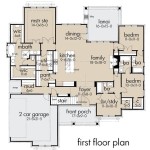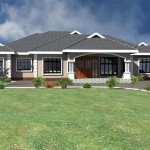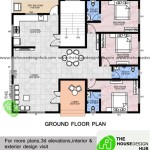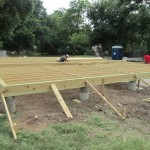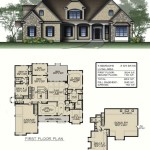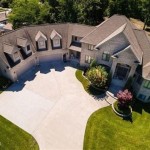```html
Unusual Floor Plans For Houses
The conventional image of a house often conjures a familiar arrangement: rectangular rooms connected by hallways, a clear separation between living and sleeping areas, and a generally predictable flow. However, the realm of architectural design offers a vast landscape beyond these norms. Unusual floor plans challenge established conventions, offering innovative solutions to spatial organization, functionality, and aesthetic expression. These plans prioritize user experience and lifestyle, creating dwellings that are not only visually striking but also deeply tailored to the occupants' needs and preferences.
Exploring unusual floor plans is not merely about novelty; it's about critically examining the way we live and how our homes can better support our diverse activities and aspirations. It's about questioning the necessity of right angles and the rigid separation of functions, and instead, embracing fluidity, connectivity, and adaptability. These concepts lead to homes that are more engaging, efficient, and reflective of the unique individuals who inhabit them. They often involve innovative use of space, unconventional room layouts, and a focus on maximizing natural light and views.
Breaking the Box: Non-Rectangular Designs
One of the most fundamental departures from conventional floor plans is the abandonment of the rectangular form. While rectangles are structurally efficient and easy to build, they can also lead to predictable and sometimes uninspired spaces. Non-rectangular designs, on the other hand, introduce dynamic geometries that can significantly enhance the character of a home. These designs can take many forms, including circular, triangular, or amorphous shapes. They can be achieved through the use of curved walls, angled corners, and asymmetrical layouts.
A circular house, for example, eliminates corners, promoting a sense of flow and continuity. This can be particularly appealing in social spaces, such as living rooms or dining areas, where a circular layout encourages interaction and conversation. The absence of sharp angles also creates a softer, more organic feel. However, circular designs can pose challenges in terms of furniture placement and the integration of standard rectangular appliances. Careful planning and custom solutions are often required to optimize functionality in these spaces.
Triangular or polygonal houses offer a different kind of geometric intrigue. These designs can be particularly well-suited to irregularly shaped sites, allowing architects to maximize the available space and create unique vistas. The angled walls create dynamic interior spaces, with varying ceiling heights and unexpected viewpoints. However, like circular designs, triangular houses require careful consideration of furniture placement and spatial organization. The acute angles can sometimes be difficult to furnish, and the overall layout must be carefully planned to ensure efficient circulation and functionality.
Amorphous shapes, characterized by free-flowing curves and organic forms, represent the most radical departure from conventional geometry. These designs often take inspiration from nature, mimicking the shapes of hills, rocks, or trees. Amorphous houses can be incredibly visually striking, creating a sense of wonder and intrigue. However, they are also the most challenging to design and build, requiring specialized construction techniques and a deep understanding of structural principles. The interior spaces of amorphous houses are often highly unconventional, requiring custom-designed furniture and a willingness to embrace the unexpected.
Blurring the Lines: Open-Concept Living and Flexible Spaces
Another key characteristic of unusual floor plans is the emphasis on open-concept living and flexible spaces. The traditional model of rigidly separated rooms is often replaced by a more fluid and interconnected layout, where different functions seamlessly blend together. This approach maximizes natural light, encourages social interaction, and creates a greater sense of spaciousness. It allows residents to adapt their living spaces to their changing needs and preferences.
Open-concept living typically involves combining the living room, dining room, and kitchen into a single, unified space. This eliminates the physical barriers that traditionally separated these areas, creating a more social and inclusive environment. The lack of walls also allows natural light to penetrate deeper into the house, making it brighter and more inviting. However, open-concept living can also present challenges in terms of noise control and privacy. Careful attention must be paid to acoustics and the strategic placement of furniture to create distinct zones within the larger space.
Flexible spaces are designed to be easily adaptable to different uses. This can be achieved through the use of movable walls, folding doors, and multi-functional furniture. A guest room, for example, can be transformed into a home office or a yoga studio with minimal effort. A large living room can be divided into smaller, more intimate spaces for different activities. This adaptability allows residents to customize their living environment to their specific needs and preferences, making the most of their available space. The implementation of flexible spaces requires careful planning to ensure ease of use and functionality. Storage solutions are also crucial to keep the space organized and clutter-free.
Loft-style apartments represent a classic example of open-concept living and flexible spaces. These apartments typically feature large, open floor plans with minimal interior walls. This allows residents to create their own customized living environments, adapting the space to their individual needs and lifestyles. Loft-style apartments often incorporate industrial-style design elements, such as exposed brick walls, concrete floors, and high ceilings, which contribute to their character and appeal.
Vertical Thinking: Multi-Level Living and Split-Level Designs
Unusual floor plans also explore innovative approaches to vertical organization. The traditional model of a two-story house with a clear separation between the upstairs and downstairs is often challenged by multi-level living and split-level designs. These approaches create dynamic spatial relationships, introduce visual interest, and maximize the use of vertical space.
Multi-level living involves incorporating multiple levels into a house, often connected by stairs, ramps, or elevators. This can be particularly effective in hillside properties, where the topography naturally lends itself to multi-level designs. Each level can be designed to accommodate different functions, creating a sense of privacy and separation. For example, the ground floor might house the living and dining areas, while the upper floors are reserved for bedrooms and bathrooms. Multi-level living can also be used to create dramatic visual effects, with soaring ceilings, open staircases, and panoramic views.
Split-level designs offer a more subtle approach to vertical organization. These designs typically feature staggered floor levels, with short flights of stairs connecting different areas of the house. This creates a sense of visual separation and spatial complexity without the need for multiple full floors. Split-level designs can be particularly well-suited to sloping sites, allowing architects to integrate the house with the natural terrain. The staggered floor levels can also be used to create distinct zones within the house, such as a semi-private living room, a raised dining area, or a sunken family room. Split-level homes maximize the use of space and create dynamic interiors.
The "butterfly roof" design, often associated with mid-century modern architecture, can be incorporated into both multi-level and split-level designs. The inverted roof shape allows for higher ceilings in the central portion of the house, creating a sense of spaciousness and maximizing natural light. The sloped roof sections can also be used to channel rainwater, which can be collected and used for irrigation or other purposes.
Ultimately, the success of an unusual floor plan depends on its ability to meet the needs and preferences of its occupants. It requires a careful consideration of lifestyle, functionality, and aesthetic preferences, as well as a willingness to embrace innovation and challenge conventional norms. The goal is to create a home that is not only visually striking but also deeply functional, comfortable, and reflective of the unique individuals who inhabit it.
```
10 Houses With Weird Wonderful And Unusual Floor Plans

10 Houses With Weird Wonderful And Unusual Floor Plans

Top 40 Unique Floor Plan Ideas For Diffe Areas

Unique House Plans Stock Narrow Odd Lot Floor

17 Unusual House Plans Ideas Floor How To Plan

Ranch Style House Plans Floor Monster

Unique House Plans Stock Narrow Odd Lot Floor

61 Weird House Plans Ideas How To Plan Floor

Unique One Story House Plans Monster

10 Houses With Weird Wonderful And Unusual Floor Plans

